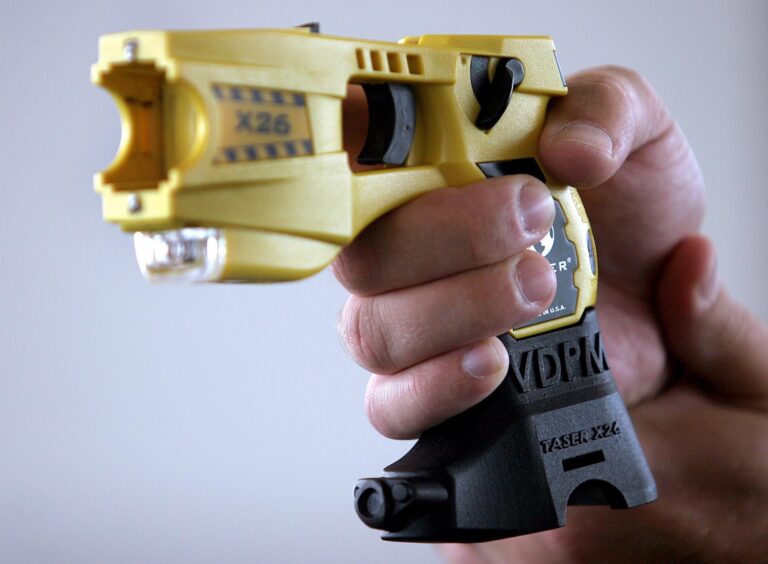Table of Contents
- Legal Landscape Surrounding Stun Gun Possession in Public Spaces
- Analyzing Landmark Defense Cases Involving Stun Guns
- Key Legal Challenges and Court Interpretations in Stun Gun Incidents
- Strategic Defense Recommendations for Protecting Stun Gun Rights
- Insights and Conclusions
Legal Landscape Surrounding Stun Gun Possession in Public Spaces
Across various jurisdictions, the regulations regarding stun gun possession in public spaces show considerable variation, often reflecting broader public safety concerns and cultural attitudes toward self-defense tools. Some states and municipalities permit the carrying of stun guns openly or concealed, provided the carrier meets specific legal criteria such as age restrictions or permits. Conversely, other regions classify stun guns alongside prohibited weapons, making unauthorized possession subject to fines or criminal charges. This patchwork of legal frameworks results in a complex environment where individuals must navigate distinct laws to avoid inadvertent violations.
Notably, legal defenses in cases involving stun gun possession frequently hinge on nuanced interpretations of intent and legality. Defendants have argued the device was carried strictly for self-defense within legally allowable parameters, while prosecutors often emphasize concerns about potential misuse or public safety risks. Examining recent case studies reveals common factors influencing judicial outcomes, including:
- Compliance with local carry laws and permit requirements
- Absence of intent to harm or commit a crime
- Clear communication of lawful self-defense purpose
- Documentation supporting responsible ownership
Analyzing Landmark Defense Cases Involving Stun Guns
Recent landmark rulings have significantly influenced the legal framework surrounding stun gun possession and use in public spaces. One prominent case illustrated how courts meticulously differentiate between self-defense rights and unlawful weapon use. The 2023 State v. Harper decision set a precedent by affirming that when a stun gun is employed strictly within the bounds of reasonable self-defense to prevent imminent harm, charges related to illegal weapon discharge may be dismissed. Conversely, the verdict highlighted that misuse or intimidation through stun guns could result in severe penalties, emphasizing the court’s balanced approach.
Judges in these cases often consider multiple factors such as:
- Whether the stun gun was legally acquired and registered
- The intent behind its use during the incident
- The presence of clear and immediate threats to personal safety
- The proportionality of the response in relation to the perceived danger
These elements collectively shape verdict outcomes, serving as guiding principles for future defense strategies. Notably, defenses incorporating expert testimony on stun gun lethality and appropriate use have emerged as critical in influencing trial results, underscoring the evolving intersection of technology, law enforcement, and public safety.
Key Legal Challenges and Court Interpretations in Stun Gun Incidents
Legal disputes surrounding stun gun possession and use in public often hinge on the ambiguous classification of these devices under regional weapon statutes. Courts have grappled with whether stun guns constitute defensive tools or unlawful weapons, significantly influencing case outcomes. Key interpretations have scrutinized factors such as intent, context of use, and compliance with local carry regulations. For instance, some rulings emphasize the defendant’s proactive communication of their lawful purpose for carrying the device, while others have underscored statutory restrictions that entirely prohibit stun gun possession in specific public environments. These differing judicial perspectives illuminate the patchwork nature of legislation governing non-lethal self-defense instruments across various jurisdictions.
- Contextual Use Evaluations: Courts frequently assess if the stun gun was employed purely for protection or escalated into aggressive conduct.
- Statutory Compliance Scrutiny: Adherence to local laws regarding stun gun registration, permit requirements, and restricted zones plays a decisive role.
- Precedent Influence: Higher court decisions often set benchmarks for lower courts on interpreting the lawful boundaries of stun gun possession.
Moreover, appellate courts have often been tasked with clarifying the scope of permissible stun gun use during confrontations. When cases ascend beyond initial judgments, justices dissect the proportionality of force applied and the immediacy of threat perceived by the carrier. These scrutiny points serve as crucial defense pillars for individuals asserting lawful self-defense, especially when confronted with ambiguous or evolving statutory language. The interplay between statutory interpretation and constitutional rights, particularly the right to personal safety, adds a complex layer to case law. Such judicial discourse not only shapes individual case outcomes but also influences future legislative considerations, pushing lawmakers to refine or redefine legal parameters concerning stun guns in public spaces.
Strategic Defense Recommendations for Protecting Stun Gun Rights
Effective defense strategies hinge on a clear understanding of local statutes and judicial precedents that impact stun gun possession and use. It is paramount to gather all relevant evidence, such as permits, proof of purchase, and documented self-defense claims, to build a comprehensive case. Collaborating with legal professionals experienced in weapon laws can help in navigating complex regulatory frameworks, challenging unlawful searches or seizures, and demonstrating the responsible ownership and use of stun guns.
Key tactical recommendations include:
- Thorough Legislation Review: Analyze local and state laws to anticipate possible challenges and restrictions.
- Preemptive Documentation: Maintain clear proof of legal acquisition and compliance with licensing requirements.
- Self-Defense Contextualization: Frame incidents within legitimate defensive scenarios to counter misuse allegations.
- Expert Testimony: Engage experts to testify on the non-lethal nature and intended purpose of stun guns.
Insights and Conclusions
In conclusion, the reviewed case studies highlight the complex legal landscape surrounding the possession and use of stun guns in public. As laws vary significantly across jurisdictions, individuals must remain well-informed about local regulations to ensure lawful self-defense practices. Legal professionals emphasize the importance of understanding both the rights and restrictions associated with stun guns, as demonstrated by the diverse outcomes in these cases. Moving forward, continued examination of courtroom decisions will be essential in shaping clear policies that balance public safety with personal security.Check Our Other Blogs
- StunGun – Your Trusted Source for Stun Guns, Laws, and Self-Defense Tips
- PepperSprayLaws – Your Trusted Resource for Pepper Spray Information
- StunGunLaws – Your Trusted Guide to Stun Gun Legality and Safety





